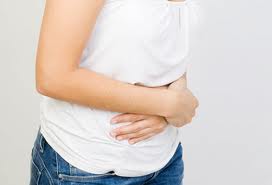 Dysmennorheoa is one of the most common gynaecological complaint among women. The term dysmennorhea explains cramping pain or discomfort in abdomen especially lower abdomen and back during or before onset of menstruation.
Dysmennorheoa is one of the most common gynaecological complaint among women. The term dysmennorhea explains cramping pain or discomfort in abdomen especially lower abdomen and back during or before onset of menstruation.
It is known as ‘Kashta Artav’ in Ayurveda, Kashta means pain and Artav means menses. Dysmennorhea is categorised in two types :
- Primary dysmennorheoa: This category includes females with cramping pain without any other associated underlying symptoms. The presenting symptoms include :
- Cramping abdominal pain especially in lower abdomen,
- Backache,
- Pain in legs,
- Nausea,
- Vomiting,
- Diarrhea,
- Headache,
- Dizziness.
These symptoms are usually seen during first two days of menses or 1-2 days prior to onset of menstrual cycle every month.
- Secondary dysmennorhea: Secondary dysmennorheoa is cramps caused by another underlying associated ailments such as endometriosis (abnormalities in the lining of the uterus), adenomyosis (nonmalignant growth of the endometrium into the muscular layer of the uterus), pelvic inflammatory disease, uterine fibroids, cervical narrowing, uterine malposition, pelvic tumors or an IUD (intra-uterine device).
Ayurveda explains ‘ Kashta Artav ‘ is mainly due to vitiated or obstructed apan vayu (a type of vata prevailing in lower portion of body below umbilicus). The most common reason for vitiation of apan vayu is constipaton, suppression of urges of faeces, urine and flatus. These factors increases dryness in the region of uterus and thus further more causes imbalance in apan vayu. The primary measure to cure kashta artav is to control vata and bring it to its normal state.
Treatment :
- The first step is to treat constipation, use of mild laxative, fibrous food, fruits and juices like sweet lime, fig, black raisins, banana and leafy vegetables serves good help.
- Anuvasan basti should be administered 4-8 days prior to expected date of menses.This not only helps in bringing vata in its normal state but also provides strength and nourishment to uterus and surrounding region.
- Bring into practice eating a spoonful of ghee before meals.
- Abhayarishta, avipattikar churna, triphala churna, gandharva haritaki, hingvashtak churna helps to treat constipation.
- During pain in menses take 3-4 spoons of Dashmoolarishta mixed with double quantity of water two to three times a day as per severity.
- Lime juice, shatavari kalpa mixed with water serves as extra nourishment.
- Soak 1 tsp of manjistha powder (Rubia cordifolia) and 1 tsp anantamool powder (Hemidesmos indicus) in glass of water (preferably in a glass container) over night, filter it and drink it early in the morning. Practice this for 3months regularly,this increases blood circulation.
- Medicines like Chandraprabha vati, yograj guggul, and dashmoolarishta along with abhayarishta reduces pain.
- Application of warm oil (Bala, seaseme, coconut oil ) on lower abdomen regularly before bathing provides nourishment and brings vata to its normal state thus reducing dysmennorhoea.
- Avoid spicy food, frequent eating of meat, junk foods and spicy food.
- Avoid excessive physical exertion, and driving two wheelers for long distance frequently.
- Regular exercise and yoga improves blood circulation and also relaxes the body thus reducing stress, anxiety and fear of premenstrual pain.
- Use of medicinal powders like Shatavari (asparagus), ashwagandha (winter cherry), dry ginger, triphala, gokshur (Tribulus terrestris ) serves as good uterine tonic.
 In case of nausea, vomitting, or headache during periods one should regulate food habits and take timely meals along with following above mentioned regimens.
In case of nausea, vomitting, or headache during periods one should regulate food habits and take timely meals along with following above mentioned regimens.- Use of tab.Sootshekhar ras, tab. kamdudha, amla, and mild purgatives reduces frequency of nausea, vomitting and headache.
- A mixture of ginger juice + honey + ghee taken before meals keeps nausea, vomitting, headache under control.
These few preventive measures can say bye to dysmennorhoea, so follow them and stay fit and happy.